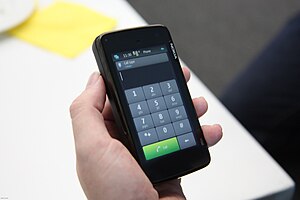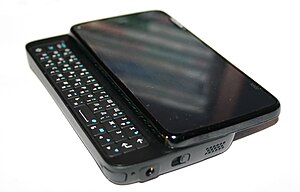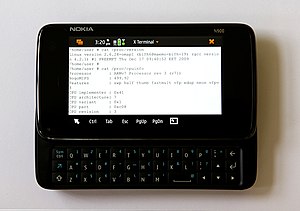
I am eating an ice cream sandwich, thinking about Ice Cream Sandwich. This is either a complete coincidence, or my subconscious is taking the piss.
I refer of course to the next version of the Android operating system. Each one is named alphabetically after a dessert, because the people at Google maybe drink a little bit too much at lunchtime. So the main current version of Android is known as Gingerbread, the one they brought out specifically for tablets is called Honeycomb.
Ice Cream Sandwich is meant to reunify the line, to combine the features of both phone and tablet versions and scale well to screens of any size. So far it’s available on few devices except the Galaxy Nexus, but it’s promised soon for Samsung’s other large-screened Galaxy phones like the fantastically popular S II – and of course the Note.
As I’ve mentioned, us Note owners in particular are champing at the bit for ICS. It seems such a desirable match for a device that also combines features of phone and tablet. And if leaks are anything to go by, it will introduce all-round improvements to performance and the interface. Not that there’s a lot wrong with the Note as it is; if there were no ICS waiting in the wings I’d probably be quite satisfied with Gingerbread. The main frustration is knowing it’s there, being dangled. The release date has slipped so much now that Samsung have promised a compensatory “Premium Suite” along with it, which includes a more developed pen-based note taking app and – wait for it – an exclusive level of Angry Birds.
Well and good, but for me there is a major disappointment.
A thing that could really improve the Note’s pen is a pointer, tracking the pen tip as it moves above the screen. The hardware allows for this; it’s precisely the same as that recommend for Windows pen input. On the Tablet PC and its descendants, the pen’s position above the screen – not on it – moves the pointer in the same way a mouse would; actually touching the screen with the pen is equivalent to a mouse click.
This is made possible by the clever Wacom technology employed. The pen has a radio circuit inside it. It isn’t powered by any battery though, but by radio itself – it simply resonates to a signal broadcast by a grid behind the screen. The same grid detects this echo, and thereby tracks the pen’s position. Pressing the pen’s button, or touching the screen with its pressure-detecting tip, simply modifies the signal returned.
This is excellent for drawing, because with an electronic pen there will almost always be some calibration issue – the potential for a difference between where the pen tip touches the screen and where the mark it makes appears – even if it is only parallax caused by the thickness of the screen glass. But if you use a pen and screen system like Tablet PC or Wacom’s Cintiq, you soon learn to watch not the tip of your pen, as you would if you were drawing on paper, but the cursor that tracks it on the screen. That way there is no calibration issue, your line appears precisely where you expect.
Samsung’s S Pen however follows the same paradigm as finger input. The screen is – seemingly – unaware of the pen’s position until it touches it. But Ice Cream Sandwich, being conceived to run on a much wider range of hardware, has native support for digital pens which includes being able to respond to “hover” events. It must therefore be aware of the pen’s exact position above the screen – and could be displaying it.
So it would be nice to see a little dot tracking the pen in S Memo, the Note’s inbuilt drawing app. But going by videos of a leaked version of the upcoming firmware, it seems alas it is not to be. Perhaps Samsung consider it too big a break with the touch-input paradigm. It’s a shame though, because the potential seems to be there.
Will we see developers taking on the challenge? A drawing program with a pointer could be a killer app for the Note range of phones and tablets. Especially if it also had the other features most sought after by artists: Layers of course, a good painting engine that creates convincing brush and pen strokes (like the one from the open source MyPaint project), and selection and fill tools.
Anyone feel like coding that?
Related articles
- Samsung’s Galaxy Note and S II getting Ice Cream Sandwich soon (news.cnet.com)
- Google shares how to prep for Ice Cream Sandwich (news.cnet.com)
alas




